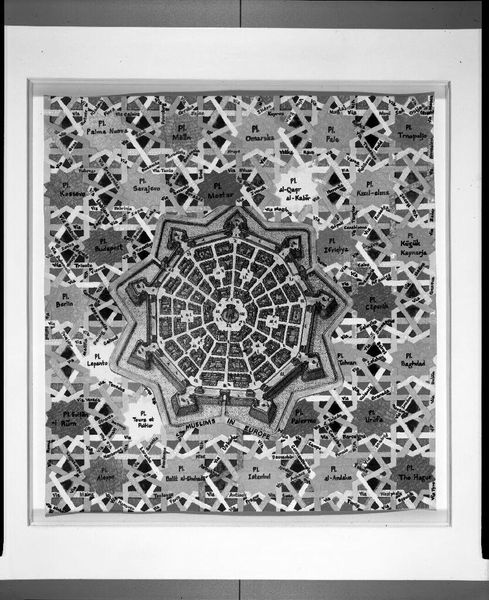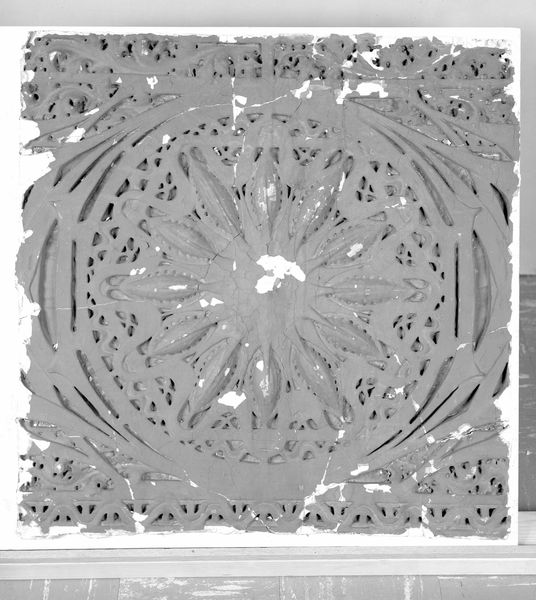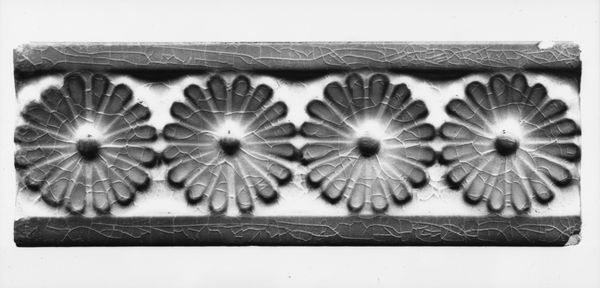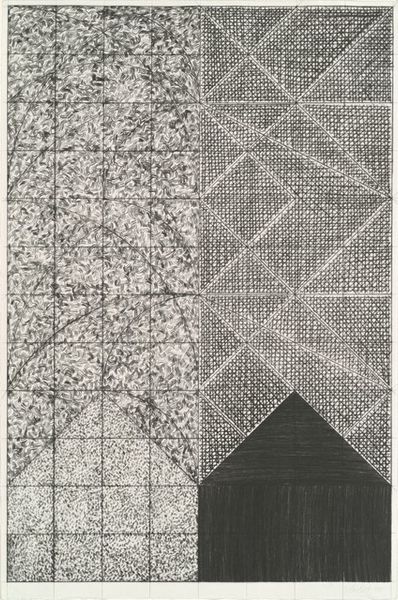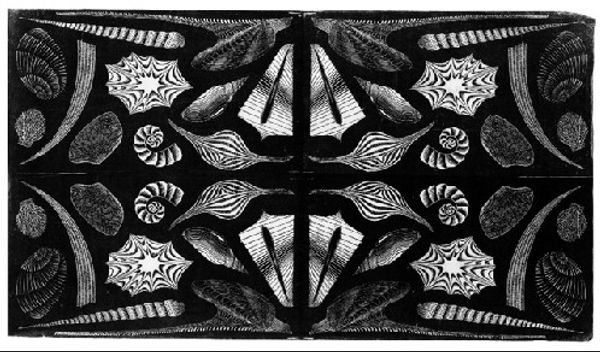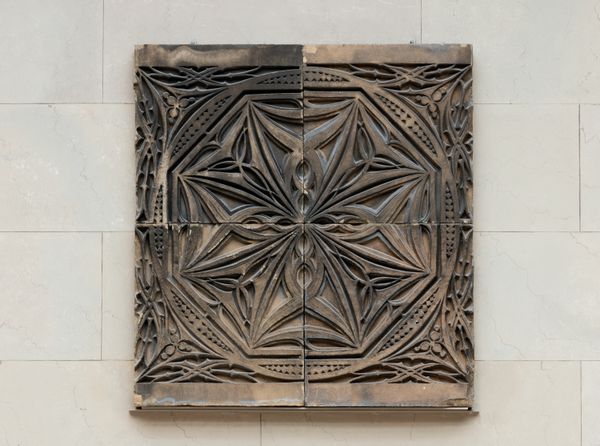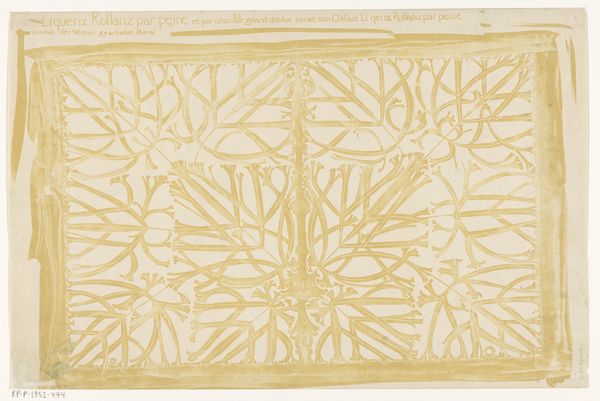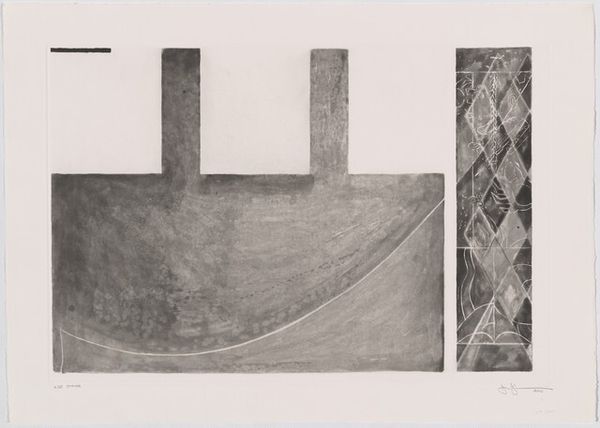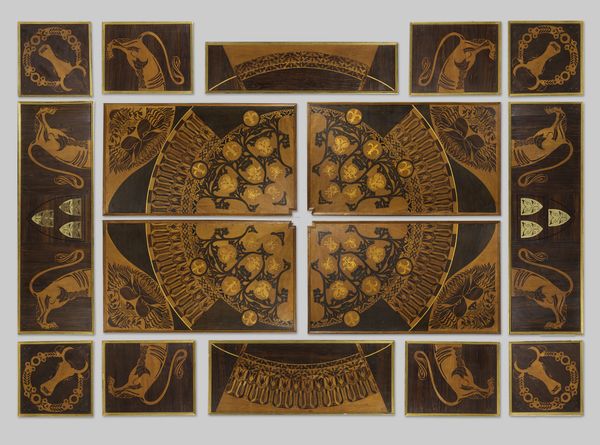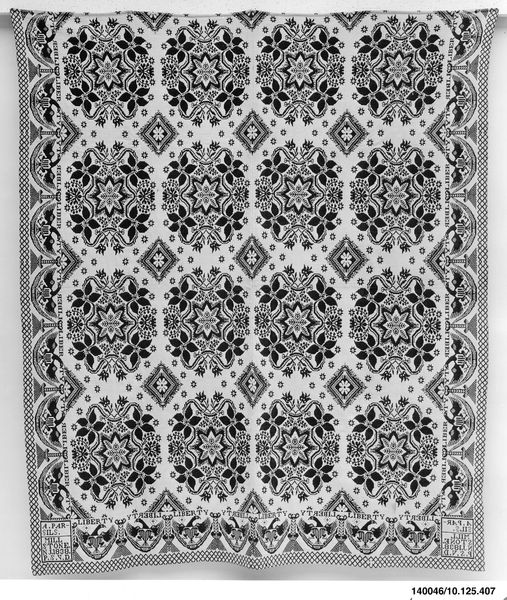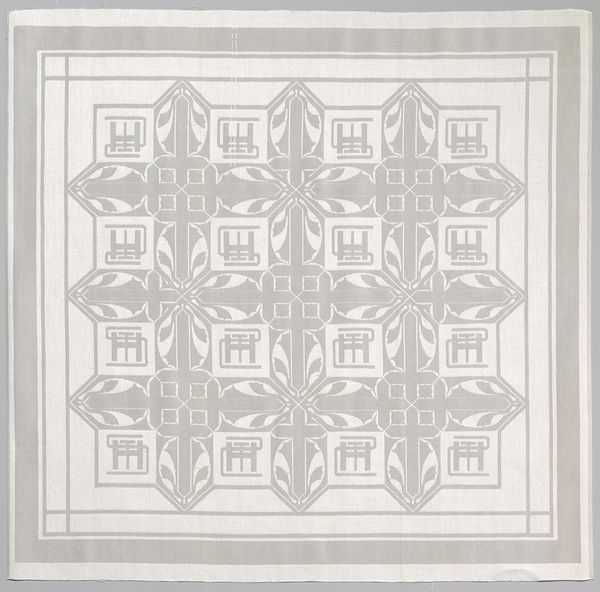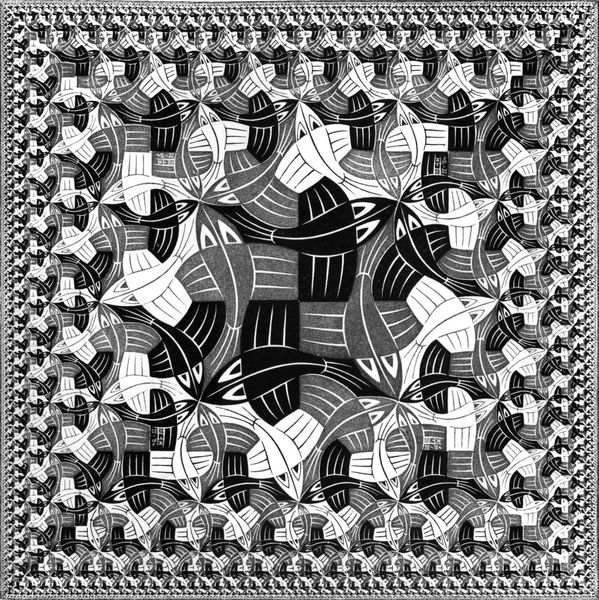
Saint Nicholas Hotel: Spandrel Panel 1892 - 1893
0:00
0:00
carving, relief, sculpture, architecture
#
organic
#
carving
#
relief
#
organic pattern
#
geometric
#
sculpture
#
decorative-art
#
architecture
Dimensions: Ea. 27 1/2 × 26 × 4 1/2 in.
Copyright: Public Domain
Curator: Let’s explore this ceramic spandrel panel designed by Adler and Sullivan in the early 1890s, part of the ornamentation for the Saint Nicholas Hotel. Editor: It immediately strikes me as both ornate and constrained, all this organic swirling contained within these rigidly geometric shapes. It’s like a visual paradox. Curator: Precisely! These panels were architectural elements, mass-produced yet meticulously designed. This tension between industry and artistry is key. The modular nature speaks to architectural efficiency and, of course, the budgets of the time. We are talking about a booming city after all, buildings had to come up fast, and appeal to a larger crowd than just art connaisseurs. Editor: But within that efficiency, these botanical motifs hint at more profound, symbolic meanings, no? The central rosette motif, repeated across the four tiles, often symbolizes renewal, the cyclical nature of life… Curator: Well, and look closely at the making. Consider the labor involved in casting and firing each tile, in a time when mechanization was transforming every facet of the architectural trades. They're challenging the hierarchy between craft and architectural 'design.' Editor: Right. The application of repeating triangular shapes across its outer and inner frames might symbolize stability, an ordered worldview that architecture traditionally provides, against, perhaps, the more fluid nature of daily life… Or even invoking religious stability. Saint Nicholas being after all a religious figure! Curator: True, these organic patterns offset that angularity. They speak of the natural world, perhaps invoking notions of paradise amidst the growing metropolis. The consumption of decoration in this way is also relevant – who was meant to look at this? Who could afford to stay there? Editor: I see the way those organic, almost Art Nouveau-like lines create a sense of flow, hinting at continuous growth even as they are trapped in their frame. Perhaps the Hotel hoped to project an aura of opulence and serenity to those with a room. Curator: Perhaps so. For me, though, what is always amazing is the idea of seriality, the replication, that opens questions about production versus 'true art'. Editor: All this close attention is transformative. Initially, this decorative panel felt like a distant echo of architectural grandeur, but considering both its design and materiality I see new meanings unfolding. Curator: Yes! Thinking about labor and context lets us approach ornamental art beyond the immediate visual impression.
Comments
No comments
Be the first to comment and join the conversation on the ultimate creative platform.
